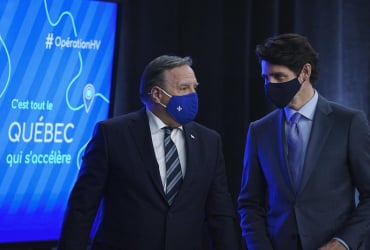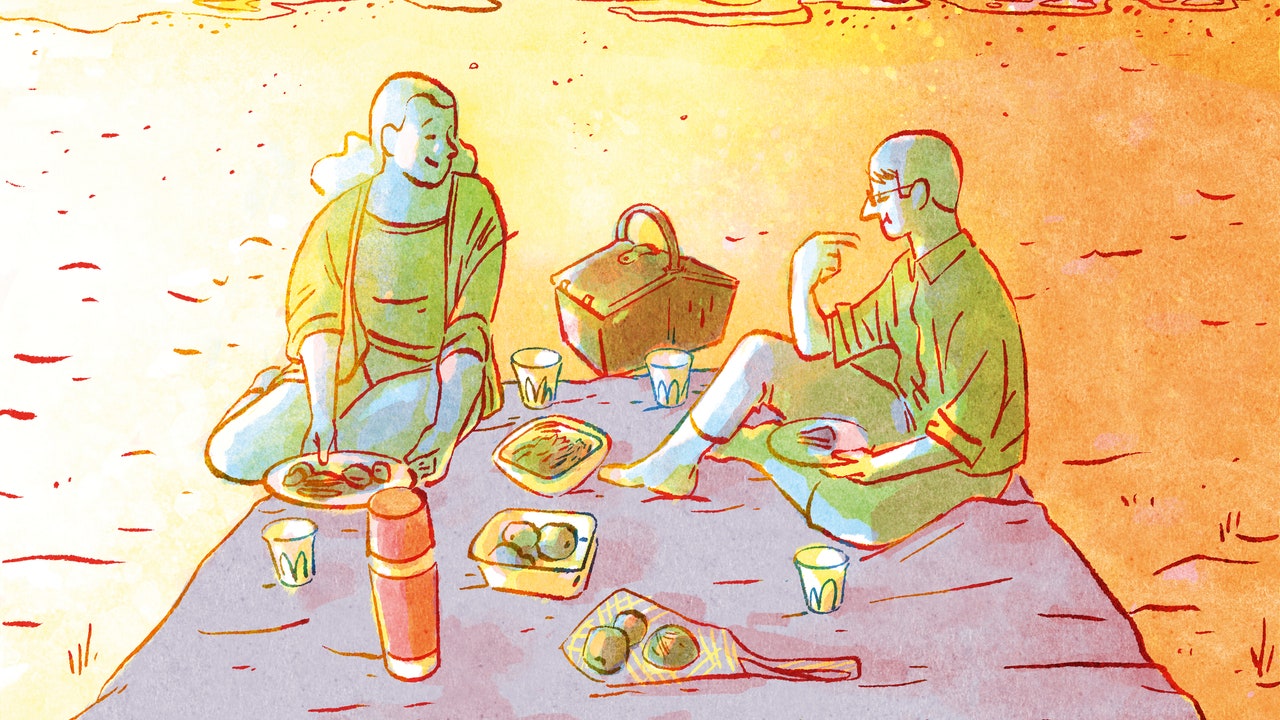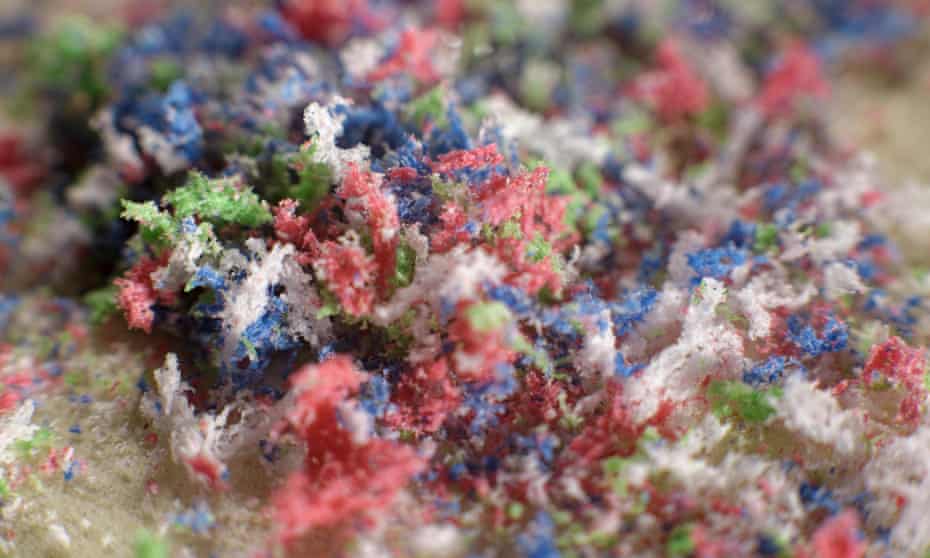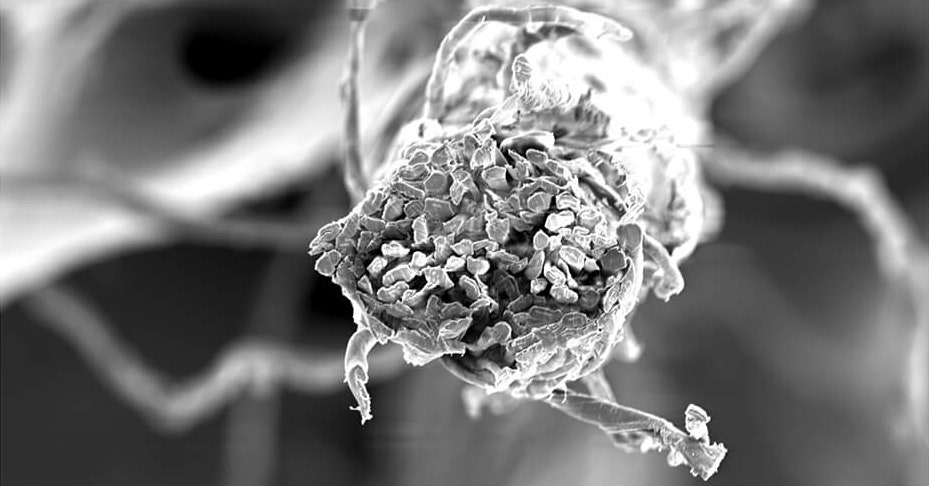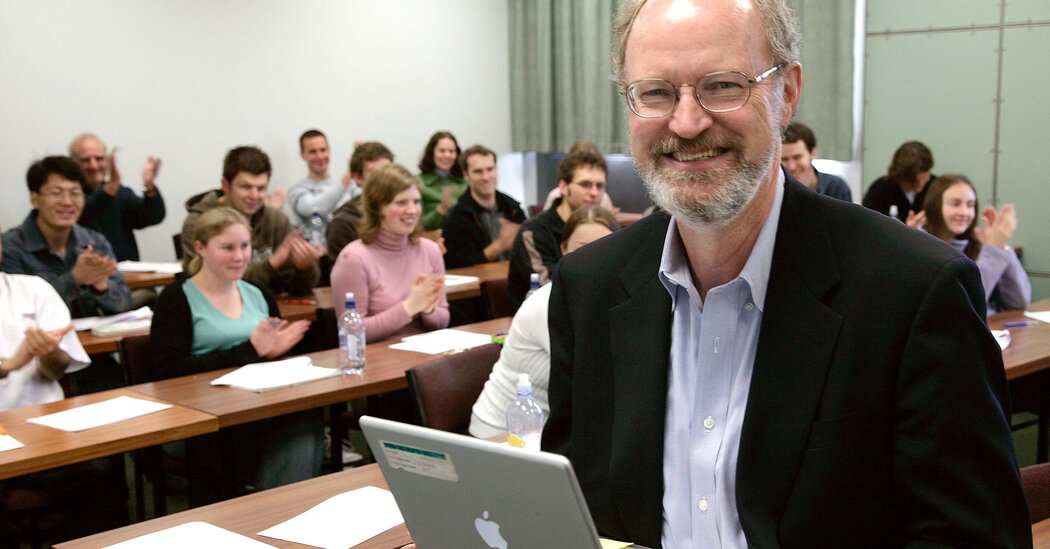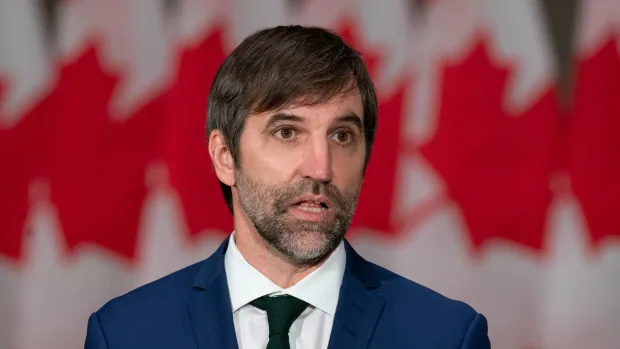A West Coast cleanup project wrapped up operations in time for Christmas after removing 50 tonnes of marine debris from the shores of B.C.’s Discovery Islands. The amount of garbage collected by a small but determined team from 357 kilometres of shoreline on Quadra, Cortes, Read, Maurelle, and Marina islands from October to late December was staggering, said project co-ordinator Breanne Quesnel. “We’re really proud we were able to help get that volume of material off the beaches,” said Quesnel, co-owner of Spirit of the West Adventures, the wilderness tourism company that secured the provincial funds to do the cleanup. Get top stories in your inbox.Our award-winning journalists bring you the news that impacts you, Canada, and the world. Don’t miss out.“But we’re really disheartened that it’s there in the first place.”Plastic waste from shellfish farms and other aquaculture operations, as well as commercial fishing ropes and nets, made up the bulk of the garbage collected, Quesnel said. Other ubiquitous offenders were large blocks of Styrofoam and tires typically used to float docks or for mooring devices, she said. The Styrofoam, or polystyrene plastic, is particularly bad because as it degrades and crumbles, the small, lightweight bits are easily and widely dispersed by wind and waves, Quesnel said. And they are almost impossible to collect, she added. What people are reading A team funded by B.C.’s Clean Coast, Clean Waters initiative works to loosen a massive tire lodged on the beach at Rebecca Spit Park on Quadra Island. Photo courtesy of Spirit of the West Adventures The cleanup crews also found a number of partially filled and leaking oil drums that needed to be carefully disposed of. The focus of the operation was to get the largest, most difficult to remove items from more remote beaches, which required specialized transport on land and water, she said. “And we need to be smarter about what (plastics) we’re using, how we’re using it, what its life cycle is,” says Breanne Quesnel, co-ordinator of the B.C. coastal cleanup in the Discovery Islands. The largest item by far was a massive 6,000-pound tire, most likely from a mining vehicle, that required two cranes to lift onto the dock and a specialized vehicle to take it away.The goal was also to collect items that would degrade into microplastics and cause havoc in the marine food web, Quesnel said. Though much of the bigger debris items on island shores came from marine industries, a lot of consumer items are finding their way into the ocean, too. “We found more than 200 shoes,” she said. Quesnel’s pet peeves are all the plastic tampon applicators, straws, plastic dental floss picks, shotgun shell casings, plastic bags and Starbucks stir sticks littering island beaches.“Anyone who has ever used a plastic tampon applicator should have to spend a day or a week cleaning up a beach … because those are just plentiful.” The fact so much plastic debris is still being found on the shores of Quadra demonstrates how pervasive the problem of plastic marine debris is, Quesnel said. The recent intensive shore sweep follows years of dedicated effort by Quadra residents who conduct an annual community beach cleanup, except the past two years because of the pandemic. And island volunteers constantly walk the beaches and pick up plastic. But the waves of detritus continue, even on the most recently cleaned beaches, Quesnel said. While beach cleanups are important and need to continue beyond being a COVID-19 relief measure, any real resolution involves choking off plastic use, she said. There needs to be much stricter policy from all levels of government around plastic production and use, and more responsibility from industries that use them, Quesnel said. “There needs to be better systems in place for tracking those materials and accountability for where they’re coming from,” she said. “And we need to be smarter about what we’re using, how we’re using it, what its life cycle is.” Styrofoam blocks used to float docks are some of the worst forms of plastic pollution on B.C.’s beaches, says Discovery Islands coastal cleanup co-ordinator Breanne Quesnel. Photo courtesy of Spirit of the West AdventuresThe problem of ocean plastics is rising Plastic pollution in aquatic ecosystems across the globe has grown sharply in recent years and is anticipated to more than double by 2030, according to a recent report by the UN Environmental Program.Plastic accounts for 85 per cent of marine debris, and 23 million metric tonnes to 37 million metric tonnes of plastic will pollute the ocean per year by 2040 — which translates to 50 kilograms of plastic per metre of coastline worldwide with dire implications for human health, biodiversity, and the climate and global economy, the report said. Canada spearheaded an international effort to reduce plastics in marine ecosystems with the 2018 Oceans Plastic Charter. But the accord is voluntary and not enough to meet the severity of the problem plastics pose, experts suggest. Ottawa has said it is supportive of current negotiations for a global treaty to mandate change for the entire life cycle of plastic, including its production, use, and disposal. The initiative is slated for discussion at a UN environmental assembly in February, but the federal government hasn’t clarified support for any specific measures or whether it would support a legally binding agreement. Quesnel said that one of the most positive aspects of the Discovery Islands beach cleanup was that 50 per cent of the garbage collected was diverted from landfills through recycling or reuse. “That’s why it was so labour-intensive,” she said. “Every piece that we picked up off of a beach came back to our yard and was dumped onto a tarp and sorted into one of 16 categories for recycling.” The cleanup was funded by the province’s $18-million Clean Coast, Clean Waters initiative, and is one of nine similar projects across much of the coast. More than 550 tonnes of garbage has been removed from coastal shores and created employment during the pandemic, according to the B.C. Ministry of Environment.Aside from protecting marine ecosystems, Quesnel said the coastal cleanup initiative is important given much of the local economy, her marine tourism business included, relies on keeping plastics out of the ocean. The islands, sandwiched between the B.C. mainland and eastern Vancouver Island, are known for their beauty and are a popular wilderness destination for kayakers, boaters and fishing enthusiasts, she said. “We really appreciated working with the local youth, community and First Nations,” Quesnel said. “But I’d rather not be cleaning up beaches, (I’d) rather be helping find better solutions for plastics and debris before they become a problem.” Rochelle Baker / Local Journalism Initiative / Canada’s National Observer
Author Archives: David Evans
A global treaty can turn the tide on ocean waste
In mid-2020, as the world’s attention was focused on tackling the Covid-19 pandemic, the scale of another pressing global challenge – plastic waste and pollution – was being quantified in one of the most analytically robust studies ever produced on ocean plastics. Breaking the Plastic Wave, produced by The Pew Charitable Trusts and SystemIQ, paints a bleak picture of 2040, when it projects ocean plastic stocks will have reached over 600 million tonnes due to increased production and insufficient collection infrastructure. This vision of the future doesn’t have to become reality. In 2022, governments around the world will come together to create a binding global treaty to address plastic waste and pollution at its source.Support for such a treaty has already been expressed by leading businesses, financial institutions, national governments, and more than two million people via a public petition. A plastic treaty could have as big an impact as the Montreal protocol that has led to the gradual repair of the ozone layer.Many businesses and governments have set ambitious targets and taken action to address plastic waste and pollution, not least through the Ellen MacArthur Foundation’s Global Commitment and Plastics Pact network. These two initiatives alone unite more than 1,000 organisations behind a common vision of a circular economy for plastic, in which all the plastic items we don’t need are eliminated, the ones we do need are designed for reuse, recycling or composting, and those that we use are kept in the economy and out of the environment.Initiatives such as this have begun to deliver change among market leaders. Their use of recycled content in plastic packaging is increasing and these companies have committed to significantly reduce use of virgin plastics by 2025. This means that fossil resources are being left in the ground, and plastic is being used again and again. Some big businesses have also piloted successful packaging-reuse models. This includes Danone, which is working closely with Loop by Terracycle to provide some of its food products in returnable jars, and Unilever, which is trialling “refill on the go” for washing-up liquid and detergent in Chile, and for its Sedal shampoo brand in Mexico.However, voluntary commitments can only do so much. To scale these efforts globally and across industries in order to end to plastic waste and pollution, more organisations must take urgent action.Building on important work carried out under the Canadian G7 and Japanese G20 presidencies in 2021, the G20 agreed to engage fully in upcoming UN discussions on how to take further decisive measures. A treaty is the next necessary step and will provide the framework for building capabilities and institutional mechanisms, and for increased international co-ordination to solve this crisis. As a global policy framework, it will underpin sectoral, regional and national action plans, and support implementation.The beginnings of a global treaty in 2022 will harmonise policy efforts, enhance investment planning, and stimulate innovation and infrastructure development for a world free of plastic pollution.Get more expert predictions for the year ahead. The WIRED World in 2022 features intelligence and need-to-know insights sourced from the smartest minds in the WIRED network. Available now on newsstands, as a digital download, or you can order your copy online.More Great WIRED Stories
Companies race to stem flood of microplastic fibres into the oceans
Companies race to stem flood of microplastic fibres into the oceans New products range from washing machine filters and balls to fabrics made from kelp and orange peel From filters to bags to balls, the number of products aimed at stopping the torrent of microplastic fibres being flushed out of washing machines and into rivers …
Continue reading “Companies race to stem flood of microplastic fibres into the oceans”
The year in sustainable healthcare reporting
Let’s take a look back at media coverage in 2021 on sustainable healthcare.We promise, in 2022, to get more sophisticated in these analyses. But even a rough cut at the data yields some pleasant surprises.For starters, our search of the LexisNexis database found 53,000 articles touching on sustainability and healthcare. The database picks up a lot of press releases and trade articles, so the number of “mainstream” reported articles that, say, our researchers at EHN.org would aggregate is considerably smaller.
Healthcare coverage, 2021 edition
Still, within that pile we can find some insight. Our system sorted those articles into different clusters, based on an AI scan of the article text and coded by color, then plotted on a timeline.That colorful graph is shown above. The x-axis shows the months of the year, while the y-axis shows the number of stories published. Several trends are apparent.
Healthcare manufacturing & materials
The teal blocks at the base of each bar show stories focused on sustainable manufacturing and materials – about 15 percent of the coverage. That coverage was fairly consistent over the year.
Covid-19 waves
That’s not the case for stories about healthcare systems getting swamped by Covid-19, right above the teal, in red blocks. Note, of course, that this is just the fraction of the stories published about Covid overrunning our health system; what’s pictured above are just those stories that that also mention sustainability or plastics or recycling.Whether even these belong in this analysis is debatable, but what’s sobering is that we saw just a brief, one-month ebb in the tsunami of coverage this issue generated – in June, when vaccines were rolling out and we all thought we had this pandemic licked.Sigh.These stories represent about 14 percent of all the sustainability coverage.
Healthcare climate emissions
Far more positive are the purple blocks, showing stories about healthcare’s carbon footprint, and – two blocks above those – the peach ones showing efforts to reduce healthcare’s carbon emissions.Note the big spike in coverage in November, when nations gathered in Glasgow for the UN climate talks (You may recall that some 50 nations – but not the United States! – pledged to reduce healthcare emissions). Together these two blocks are about 20 percent of total sustainable healthcare coverage in 2021.
Healthcare waste & recycling
Two final nodes deserve mention: The light green and yellow blocks between the two climate-related ones. They show stories focused on healthcare waste and recycling, respectively, and together they represent almost a quarter of the coverage – a number we at EHN.org found surprising.We’ll be out in 2022 with reports and analyses breaking apart the myth of recycling. But the attention the sector is giving to waste – and the attention that focus is getting in the media – is worth noting.That’s a quick look at the media landscape, and an imprecise one; again, our goal is to get you more detail over this next year and to do what we can to increase the volume and depth of coverage – so we have more stories to analyze when we do this again at the end of 2022!Happy New Year!
Subscribe to our healthcare newsletter, Code Green
From Your Site Articles
Related Articles Around the Web
Plastic beads could make nets more visible to cetaceans, scientists say
Plastic beads could make nets more visible to cetaceans, scientists say Beads add hardly any extra weight to fishing gear and could save thousands of lives, it is claimed Simple plastic beads could save the lives of some of the thousands of porpoises and other cetaceans that get caught in fishing nets each year, scientists …
Continue reading “Plastic beads could make nets more visible to cetaceans, scientists say”
This company has a way to replace plastic in clothing
Luke Haverhals wants to change how yoga pants are made. Most performance fabrics used in athletic clothing, like Spandex, are made from synthetic fibers—plastic, essentially. Those plastics are problematic for humans and the environment. Haverhals’ company, Natural Fiber Welding, offers an alternative to synthetic fabrics.NFW makes a performance cotton textile called Clarus that can be used for clothing. The fabric is made from cotton that has been treated to partially break down the organic material and leave it stronger and denser. The result is cotton yarn that behaves more like synthetic fibers.When asked if his company is a tech company or a textiles company, Haverhals responds without hesitation. “We’re a tech company … but our first focus is textiles.”Haverhals has a PhD in chemistry and began his career teaching at the Naval Academy in 2008. While there, he worked with a team of chemists and materials scientists researching ionic liquids, which are essentially melted salts. These salts usually remain liquid at room temperature and can be used as solvents for breaking down biomass, things like cotton and cellulose. In 2009, with funding from the Air Force’s Office of Scientific Research, the team realized a significant breakthrough in strengthening natural fibers using ionic liquids.The team asked what might happen if they partially broke down natural fibers and then welded or fused them together. The result is a kind of monofilament cotton. While the original fibers might be only a few centimeters long, the partially dissolved and fused fibers can be made much longer. This creates a stronger yarn that mimics the performance characteristics of synthetic fibers.In 2016, Haverhals left the Naval Academy and founded NFW with a grant from the Department of Defense and a license from the Air Force to produce yarns and textiles using the process that had come to be known as “fiber welding.” The company has been issued eight patents globally, and has 90 pending.Haverhals and NFW win praise from critics of plastics—and of marketing campaigns claiming to have eliminated them. There’s growing concern about the plastic microfibers synthetic materials like polyester shed with each turn of the washing machine. “I think he (Luke) is the real deal, and I think there are very few people out there that are the real deal,” says Sian Sutherland, founder of A Plastic Planet, a nonprofit that aims to eliminate the use of plastics. “This is not just about eradicating fossil fuels within the textile industry, but above and beyond that, it’s also about toxins.”NFW has attracted a handful of big-name investors, including Ralph Lauren, BMW’s iVentures, and Allbirds. In July, the company said it had raised $15 million from private investors, bringing its total to $45 million. Some of that money went to expand its factory in Peoria, Illinois, where it’s now working to scale up production to hundreds of thousands of square feet of Clarus per month. In September, NFW announced a partnership with Patagonia to bring Clarus fibers into some of the brand’s new products. Haverhals says hundreds of brands are in line to buy the company’s textiles for their own products. He says NFW will provide standardized products to manufacturers and work with brands hoping to develop specialized textiles.“I think he (Luke) is the real deal and I think there are very few people out there that are the real deal.”Sian Sutherland, founder, A Plastic PlanetMirum, NFW’s other product line, is a plant-based alternative to leather. It’s made from things like coconut husk, natural rubber, or cork and is cured, or enhanced for durability, using a patented chemistry with no petrochemical additives. This differentiates Mirum from other synthetics that rely on harsh chemical treatments to achieve a desired consistency or feel. The company pitches it as a substitute for leather in products such as auto interiors and shoes. Allbirds plans to start selling shoes made with Mirum soon.Kasper Sage, managing partner at BMW’s iVentures venture capital arm, says NFW is promising because its products are high quality and sustainable, and the technology is scalable, which is important to automakers. “This is the only company we have found … trying to tackle this problem, that has the potential to really make it in serious automotive production,” says Sage.
UK shoppers shun plastic bags to save pennies not the planet, study finds
UK shoppers shun plastic bags to save pennies not the planet, study finds Analysis of 1m loyalty card transactions suggests decline is mostly down to levy on single-use bags Shoppers shun single-use plastic bags to save pennies rather than the planet, a “big data” study of more than 10,000 consumers has found. The research by …
Continue reading “UK shoppers shun plastic bags to save pennies not the planet, study finds”
Robert H. Grubbs, 79, dies; chemistry breakthrough led to a Nobel
He helped perfect the manufacturing of compounds that are now used to make everything from plastics to pharmaceuticals, marking an advance in “green chemistry.”Robert H. Grubbs, an American chemist who helped find a way to streamline the manufacturing of compounds that are used to make everything from plastics to pharmaceuticals so that they produce less hazardous waste, a “green chemistry” breakthrough that brought him a share of the Nobel Prize in 2005, died on Sunday in Duarte, Calif. He was 79.His son Barney said the cause was a heart attack, which Dr. Grubbs suffered while being treated for lymphoma at the City of Hope Comprehensive Cancer Center.The process that Dr. Grubbs helped perfect is called metathesis (pronounced meh-TATH-eh-sis), which means “changing places.” It allows molecules to break and then form again as strong “double bonds” of carbon atoms, creating new compounds.Metathesis was first discovered and used in the 1950s, but how it worked remained a mystery until it was explained in 1971 by the French chemist Yves Chauvin and a student of his, Jean-Louis Hérrison.They showed how a metal-carbon catalyst can pair with the fragment of a molecule to create a temporary bond, like two dancers clasping their four hands. The newly created bond then finds another, similar pair of molecules — the two dancers are joined by two others — forming a ring. The ring then breaks apart, and the catalyst goes off with a molecular piece from the second pair, which rearranges its carbon bonds.Metathesis is extremely effective, but some of the early catalysts were difficult to work with and could be unstable. In 1990, Richard H. Schrock, a professor at the Massachusetts Institute of Technology, made a breakthrough by developing catalysts based on the metals tungsten and molybdenum. The new catalysts were more efficient, but they still had shortcomings, notably that they fell apart when exposed to air.Working separately, Dr. Grubbs, who had begun his research on metathesis in the 1970s, in 1992 came up with catalysts that used the metal ruthenium. His catalysts were not always as efficient as Dr. Schrock’s, but they were stable in air and more selective in how they bonded with molecular chains.Dr. Schrock said of Dr. Grubbs’s work, “He was the one who really took what I did and turned it into something practical.”The remarkable thing about metathesis was that it worked at all, Dr. Grubbs said. “Carbon-carbon double bonds are usually one of the strongest points in the molecule,” he explained. “To be able to rip them apart and put them back together very cleanly was a complete surprise to organic chemists.”The work of Dr. Grubbs and Dr. Schrock paved the way for metathesis to become a cornerstone of chemical manufacturing. The catalysts they developed, which are named for them, are in wide use today in making chemicals for a variety of manufacturing processes.In addition to their other advantages, the new catalysts produced far less waste, particularly hazardous waste. In announcing that Dr. Grubbs, Dr. Chauvin and Dr. Schrock would share the 2005 Nobel Prize in Chemistry, the Royal Swedish Academy of Sciences, which manages the prizes, said, “This represents a great step forward for ‘green chemistry,’ reducing potentially hazardous waste through smarter production.”Dr. Grubbs attending a reception in Washington in 2005 honoring that year’s Nobel Prize winners. Throughout his career he mentored hundreds of Ph.D. students and postdoctoral associates.Mark Wilson/Getty ImagesRobert Howard Grubbs was born on Feb. 27, 1942, on a farm in western Kentucky between Calvert City and Possum Trot. He was the second of three children of Howard and Faye Grubbs.Robert’s maternal grandmother was well read and educated, and his mother became a schoolteacher, working for more than 35 years in small rural schools. She had received a teaching certificate when she was younger, but it took her 28 years to earn her bachelor’s degree by taking night and weekend classes, sometimes with Robert in tow.Dr. Grubbs’s father was a mechanic who built the farmhouse where his children were born. He worked for the Tennessee Valley Authority, operating and maintaining heavy equipment for dams in western Kentucky and Tennessee.In an autobiographical sketch for the Nobel committee, Dr. Grubbs wrote, “The academic model of my mother and grandmother and the very practical mechanical training from my father turned out to be perfect training for organic chemical research.”Enrolling at the University of Florida, he majored in agricultural chemistry, combining his interest in science, developed in junior high school, and his boyhood passion for farming.One summer, while working in an animal nutrition laboratory analyzing steer feces, he was invited by a friend to work in an organic chemistry laboratory being run by a new university faculty member, Merle Battiste. Around that time, Dr. Grubbs became absorbed in a book called “Mechanisms and Structure in Organic Chemistry,” by E.S. Gould, which explained how chemical reactions work. His lab experience and the book persuaded him to devote himself to chemistry, he said.It was a lecture at the university by Rowland Pettit, an Australian chemist, that inspired Dr. Grubbs to begin looking into the use of metals in organic chemistry, exploratory work that would lead to the Nobel.After earning his undergraduate and master’s degrees at the University of Florida, he moved to Columbia University in New York for his doctoral degree, working under Ronald Breslow. Dr. Battiste had been Dr. Breslow’s first Ph.D. student. While at Columbia, Dr. Grubbs met and married Helen O’Kane, who is a speech-language pathologist from Brooklyn.He obtained his Ph.D. in 1968 and then worked for a year at Stanford University as a National Institutes of Health fellow. In 1969, he joined the faculty of Michigan State University and worked there until 1978. During that time he started his research on catalysts in metathesis.Dr. Grubbs was hired by the California Institute of Technology in 1978 and worked there until his death, advising and mentoring more than 100 Ph.D. candidates and almost 200 postdoctoral associates over they years.In 1998, he and a chemistry postdoctoral fellow, Mike Giardello, founded Materia, a Pasadena-based technology company that has the exclusive rights to manufacture Dr. Grubbs’s catalysts. The business was sold in 2017 to Umicore and then to ExxonMobil this year.Dr. Grubbs received the Benjamin Franklin Medal from the Franklin Institute in 2000 and was a member of the National Academy of Sciences, a fellow of the American Academy of Arts and Sciences and a member of the Royal Society of Chemistry.In addition to his wife and his son Barney, he is survived by another son, Brendan; a daughter, Kathleen; two sisters, Marie Maines and Bonnie Berry; and four grandchildren.As Dr. Grubbs wrote in his autobiographical sketch, his path toward the Nobel had been set as a boy.“As a child I was always interested in building things,” he recalled. “Instead of buying candy, I would purchase nails, which I used to construct things out of scrap wood.”Sometimes he would help his father rebuild car engines, install plumbing and build houses on the farms owned by his aunts and uncles, who mostly lived close by in Kentucky.But in the end, he wrote, he discovered that “building new molecules was even more fun than building houses.”
Latin America urges US to reduce plastic waste exports to region
Latin America urges US to reduce plastic waste exports to region Study finds exports to region doubled in 2020 with practice predicted to grow as US invests in recycling plants Environmental organisations across Latin America have called on the United States to reduce plastic waste exports to the region, after a report found the US …
Continue reading “Latin America urges US to reduce plastic waste exports to region”
Canada moving to ban plastic straws, bags by end of 2022: Guilbeault
It’s the end of days for plastic grocery bags and Styrofoam takeout containers in Canada, but the products can still be manufactured for export.Environment Minister Steven Guilbeault published draft regulations Tuesday outlining how Canada will ban the manufacture, sale and import of these items, along with plastic cutlery, stir sticks, straws and six-pack rings, by the end of next year. The regulations outline how each of the products is to be defined; plastics bags for example are those made of plastic film which will break or tear if used to carry 10 kilograms over a certain distance. Cutlery includes forks, knives, spoons, sporks and chopsticks that will start to melt if immersed in hot but not boiling water. There are some exceptions for single-use plastic flexible straws to accommodate people with disabilities and those needing them for medical purposes. The public can provide written comment on the draft regulations until March 5, and the timing of the final regulations will depend on how much feedback is received. World Trade Organization rules mean Canada has to allow a six-month phase-in period once the final regulations are published, but Guilbeault said he expects them to take effect by the end of 2022. He said the ban is only part of the story because what isn’t being banned has got to be recycled. “I mean, rightly so, a lot of people are focusing on the ban and that’s important,” he said. “But one of the bigger challenges we have is to get our house in order when it comes to recycling.” A 2019 Deloitte report commissioned by Environment and Climate Change Canada said 3.3 million tonnes of plastic waste was tossed in 2016 and less than one-tenth of it was recycled. Environmental groups urge further action There were then only 12 recycling companies nationwide. Canada set a target to recycle 90 per cent of plastic waste by 2030 and Guilbeault said there is work underway to standardize and co-ordinate recycling across provinces. Standards for plastics to make them easier to recycle, as well as a requirement that half of all plastic packaging must be made of recycled material, are also coming, he said. In 2016, almost 30,000 tonnes of waste ended up in the environment, polluting rivers, beaches and forests with discarded coffee cups, water bottles, grocery bags and food wrappers. “People are tired of seeing this litter in our streets and I think some of the powerful images we’ve seen around the world of plastic waste affecting our ecosystem has really gotten to people,” Guilbeault added. “So they want us to move and we’re moving.” Sarah King, head of Greenpeace Canada’s oceans and plastics campaign, said the government is moving too slowly and isn’t going far enough. King wanted to see all single-use plastics banned, including plastic bottles, cigarette filters, coffee cups and food wrappers. With every day the government stalls, we are missing an opportunity to halt tonnes of plastic pollution from being dumped in the environment.- Gretchen Fitzgerald, Sierra Club of Canada Foundation “Canadians have been waiting a long time for the federal government to take strong and urgent action to tackle plastic waste and pollution and these regulations definitely don’t reflect that call to action,” she said. King said the government also needs to focus its energy and money on transitioning from single use and recycling to reuse and refill strategies. Environmental Defence, a Canadian advocacy group, welcomes the ban generally, but has concerns about the export of plastics. “The government must ban their manufacture for export or Canadian-made single-use plastic products will continue to pollute other countries,” Karen Wirsig, Environmental Defence’s plastic programs manager, said in a statement. “The government also needs to expand the list of banned single-use plastics, including hot and cold drink cups and lids, which are consistently found littered in the environment,” the statement reads. A federal government assessment on plastic pollution in 2020 reported that 77 per cent of the 4,800 kilotonnes of plastic polymers produced in Canada in 2016 were exported. “The government has determined, through thorough analysis, that prohibiting single-use plastics manufactured or imported for export would not lead to a global reduction in plastics,” a spokesperson for Guilbeault’s office told CBC News. “Rather, global demand would likely be met by businesses in countries that still allow for export.” “Minister Guilbeault’s mandate letter is clear about working with other countries to develop a global agreement on plastics that would target this issue more comprehensively,” the spokesperson added. The Sierra Club Canada Foundation, another environmental advocacy group, welcomed the news, but said it too wants to see the ban expanded. “We also need to expand this ban to include all unnecessary items of single use plastic, and we expect this list to be expanded in the New Year,” Gretchen Fitzgerald, the national programs director, said in a statement. “From announcement to implementation, this ban will take three years to come into force,” she continued. “With every day the government stalls, we are missing an opportunity to halt tonnes of plastic pollution from being dumped in the environment.” Prime Minister Justin Trudeau said in June 2019 that a ban on single-use plastics would be in place as early as this year, but the pandemic delayed the scientific assessment that ultimately declared plastics as “toxic.” It also slowed down work on which plastics to target. Industry pushes back on ‘toxic’ designation In May, companies came together under the banner Responsible Plastic Use Coalition, which has now sued the government over the designation of plastics as toxic. The coalition argues the designation is defamatory and harmful to its industry, which produces many crucial products that are not harmful. A spokesman for the coalition said Tuesday the government should have waited until that case has concluded before moving on the ban. Guilbeault said the lawsuit has no effect on the regulatory progress, “just like the lawsuit on carbon pricing didn’t interferewith us implementing carbon pricing in Canada.”

